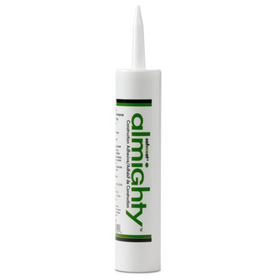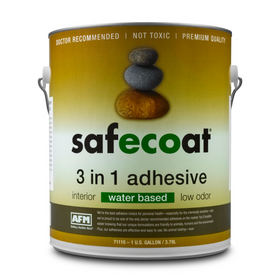
Mechanical Concrete for Home Foundations
Last Updated: Mar 20, 2025The concrete industry is one of the world's largest greenhouse gas emitters. Some estimates find that this industry is alone responsible for up to 8 percent of all CO2 emissions. Despite this enormous carbon footprint, we continue to depend on cement and concrete for the roads we drive on, the buildings we occupy, and everything in between. We produced and used over 4.1 billion metric tons of cement in 2018 alone. Sustainability-minded homeowners should search for ways to reduce dependence on one of the most commonly used (and most contaminating) building materials. Mechanical concrete for home foundations is one alternative worth exploring.
The Pervasiveness of Cement and Concrete in Home Foundations
Unless you live in some marshy area of southern Florida, the chances are that your home rests on top of a slab foundation made from poured concrete. According to the National Association of Home Builders (NAHB), homes built on slab foundations grew from 46 percent to 60.1 percent over the past 18 years.
Concrete foundations, when poured correctly, can offer a stable base for your home. A slab foundation provides structural support and a certain degree of water protection. However, water can move through cement, which is one factor leading to high humidity and water damage issues in homes. Most home contractors rely on concrete home foundations because of the ease of bringing in big machines to excavate the area and fill it in with cement footers and a concrete slab.
Table of Contents
- What is Mechanical Concrete?
- Mechanical Concrete as an Improvement on the Rubble Trench
- Sustainability Advantages that Come with Mechanical Concrete Foundations
- How to Use Mechanical Concrete for Your Home
- Where Else Can I Use Mechanical Concrete?

Concrete foundations also come with an enormous carbon footprint that is rarely taken into consideration. A 40 foot by 50-foot foundation, poured six inches deep, would require over 37 cubic yards of concrete or 1,667 eighty-pound bags of pre-mix concrete. The Portland Cement Association states that manufacturing one cubic yard of concrete, approximately 3,900 lbs, is responsible for about 400 lbs of CO2 emissions. One slab foundation for a traditional 2,000 square foot home, then, could be responsible for almost 15,000 pounds of CO2 emissions.
Might there be a more carbon-friendly home foundation option that reduces the environmental impact of the foundation of our homes?

What is Mechanical Concrete?
There has been a lot of attention recently about mechanical concrete as a more durable and sustainable road base alternative. Around the world, concrete roads routinely crack and fail because of unstable bases that cause shifting and movement. Primarily, mechanical concrete is recycled tires filled with aggregate that help to stabilize road bases.
In many places worldwide, old tires are being recycled and repurposed for use as a more stable road base. Instead of mixing dirt with cement and gravel, the most common road base formula, old tires filled with gravel or other aggregates, resist shifting and movement, thus prolonging the life of roads, driveways, and other impermeable surfaces paved with concrete or asphalt.
In recent years, sustainable home builders have considered mechanical concrete an innovative and viable home foundation alternative.

Mechanical Concrete as an Improvement on the Rubble Trench
The rubble trench foundation is a type of foundation for buildings that minimizes dependence on cement and concrete. This foundation alternative was used thousands of years ago by the Roman Empire. It was popularized more recently by the famous architect Frank Lloyd Wright.
The rubble trench is essentially a trench dug below the frost line, lined with landscape carpeting, and filled in with concrete. The trench is usually drained toward "daylight" so that moisture can move away from the walls of a home. Then, a rubble trench serves the double purpose of offering a stable foundation for homes and improved drainage to keep home foundations dry.
Using mechanical concrete (used tires filled in with gravel), crushed rock, or another aggregate, can improve the strength of the traditional rubble trench foundation. According to one video, mechanical concrete is at least three times stronger and more durable as a road base than gravel placed alone. For home foundations, then, old tires' strategic use can help eliminate shifting and movement. This increased stability reduces the risk of structural cracks in your home's foundation and walls.
Sustainability Advantages that Come with Mechanical Concrete Foundations
Reducing reliance on cement and concrete is an essential component of green building. There are sustainable cement and concrete alternatives that are increasingly available. Unfortunately, most contractors continue to hire in the cement truck when it's time to pour the foundation or slab. As we mentioned above, replacing a cement slab or concrete foundation with mechanical concrete could help reduce the carbon emissions associated with the construction of your home by 15,000 pounds or more.
Utilizing gravel, crushed rock, or other natural aggregate contained within the recycled car tires is more natural and permeable. This can increase the drainage possibilities around your home to help reduce the risk of water damage and reduce stormwater runoff.
Mechanical concrete is an excellent strategy for homeowners looking to incorporate recycled materials into their homes. The green building certification program LEED offers points for recycled content. Homeowners seeking LEED certification can get additional LEED points for homes that use recycled material in the building process in the Materials and Resources category in the credit relating to Environmentally Preferable Products.
Outside of earth ship construction, recycled tires are not usually considered to be suitable for home construction. However, our addiction to cars means that scrap tires are one of the most abundant sources of waste. Each year, American cars produce upwards of 246 million waste tires from the vehicles we drive. Some of those tires are recycled into asphalt aggregate, playground surfaces, and other things. However, 11 percent of tires end up in landfills, and almost half are burned for fuel. Tire-derived fuel is far from a clean energy source but, concrete kilns and power plants continue to rely on this dirty energy alternative.
Recycling used tires for sustainable home foundations, then, could offer an alternative to reduce our reliance on concrete. It is an excellent way to reutilize an abundant source of waste that is often burned as a dirty, carbon-emitting fuel source.
How to Use Mechanical Concrete for Your Home
Most contractors will probably have no idea of incorporating used tires filled with gravel for a home foundation or slab. Finding innovative, sustainably-minded builders can be a challenge, especially for homeowners looking to push the boundaries of sustainable building alternatives.
For homeowners looking to build their own homes or homesteads, used tires can easily be found and sourced at mechanic shops. The trench for your footer will have to be much broader to accommodate the width of the tire. When filling in the footer and slab, you will need to stack the tires in the same manner as bricks on a wall, and it is important to tamp the gravel or aggregate fill at each level. While this does amount to a lot of physical labor, a mechanical concrete foundation for a home will easily last a lifetime.

Where Else Can I Use Mechanical Concrete?
Old tires filled with gravel can also be used for your driveway as a type of DIY permeable pavement. Permeable paving reduces stormwater runoff from your property and replenishes the groundwater table - it's a win, win!
Tobias Roberts
Tobias runs an agroecology farm and a natural building collective in the mountains of El Salvador. He specializes in earthen construction methods and uses permaculture design methods to integrate structures into the sustainability of the landscape.










